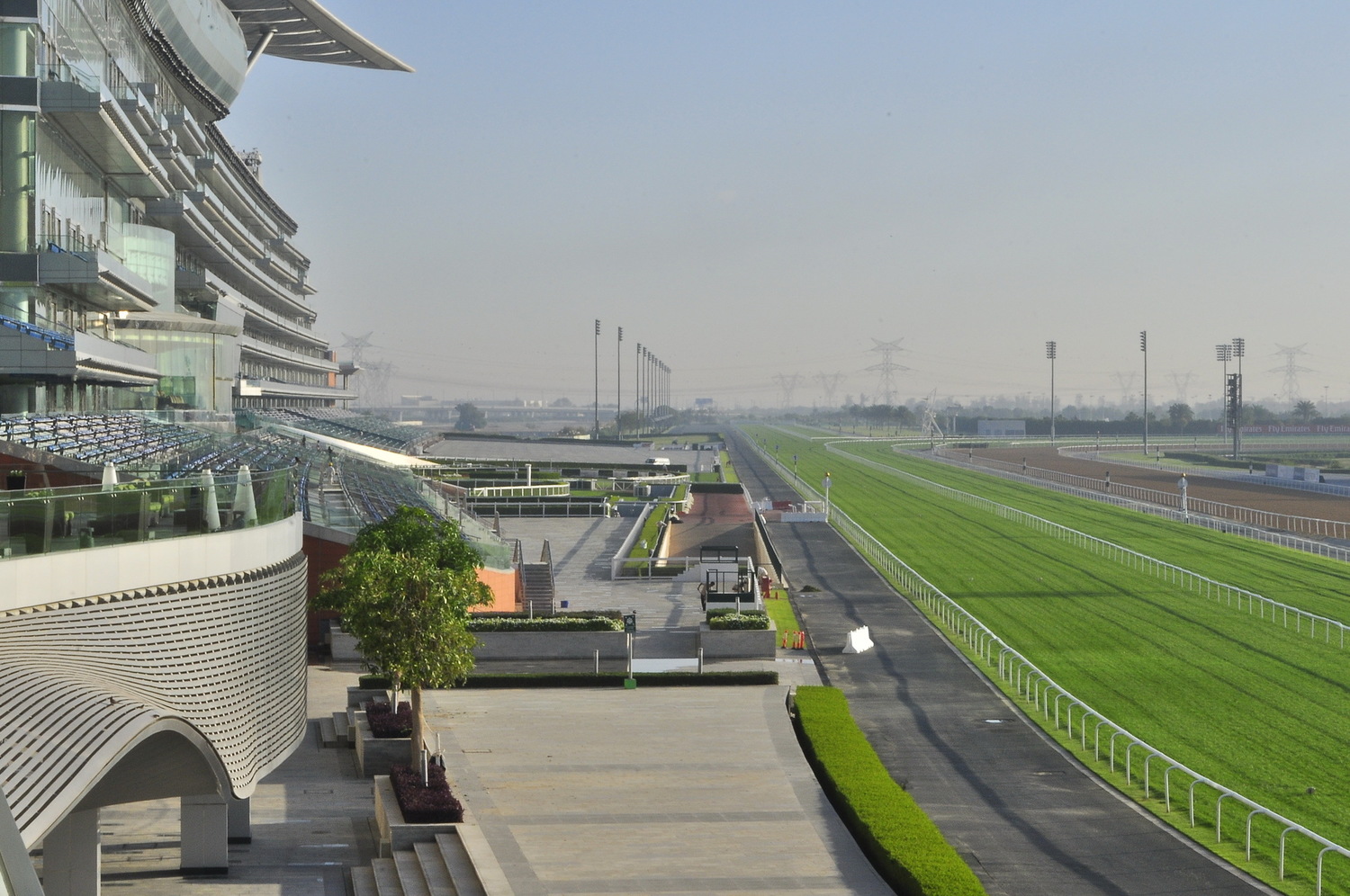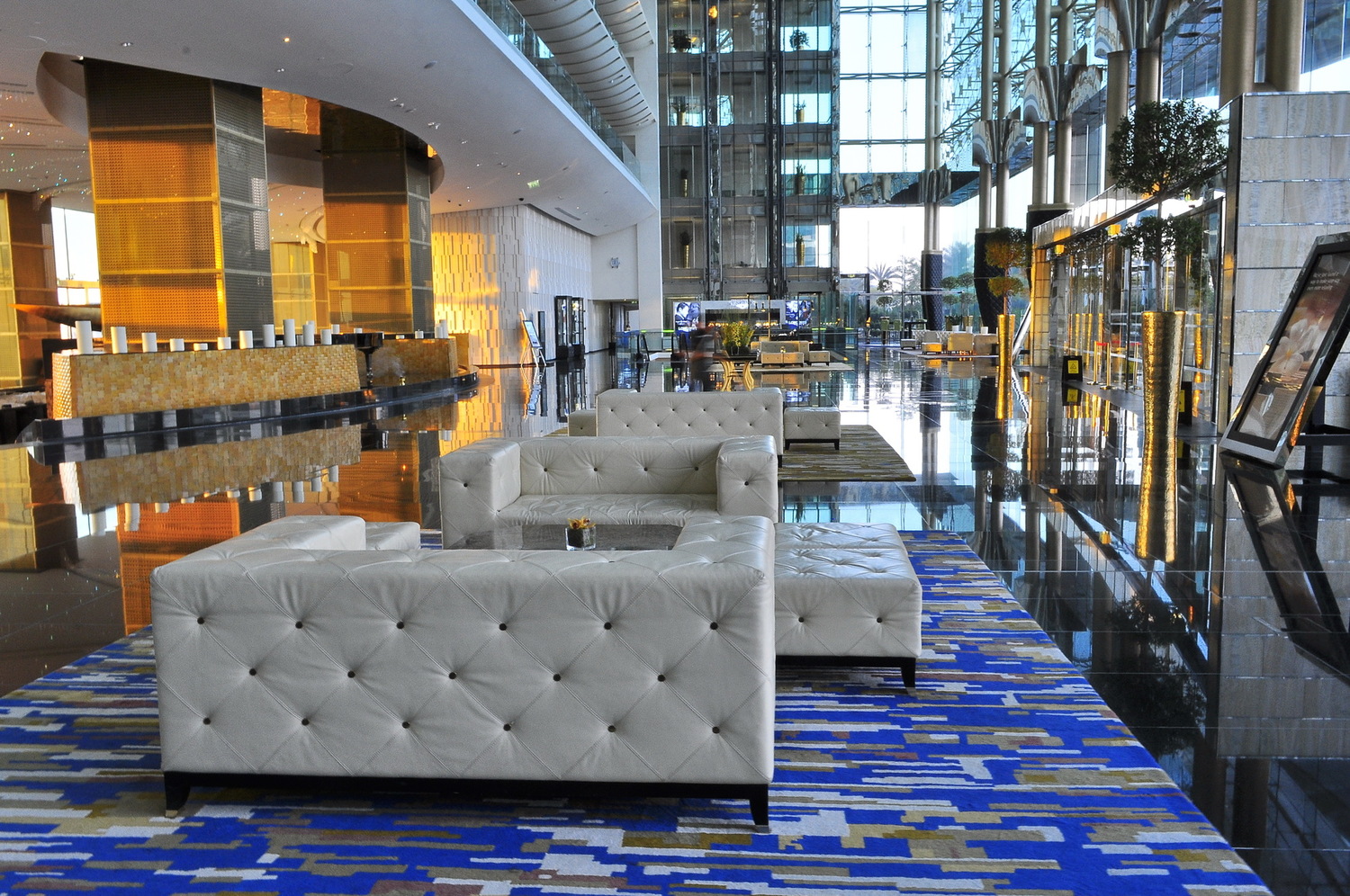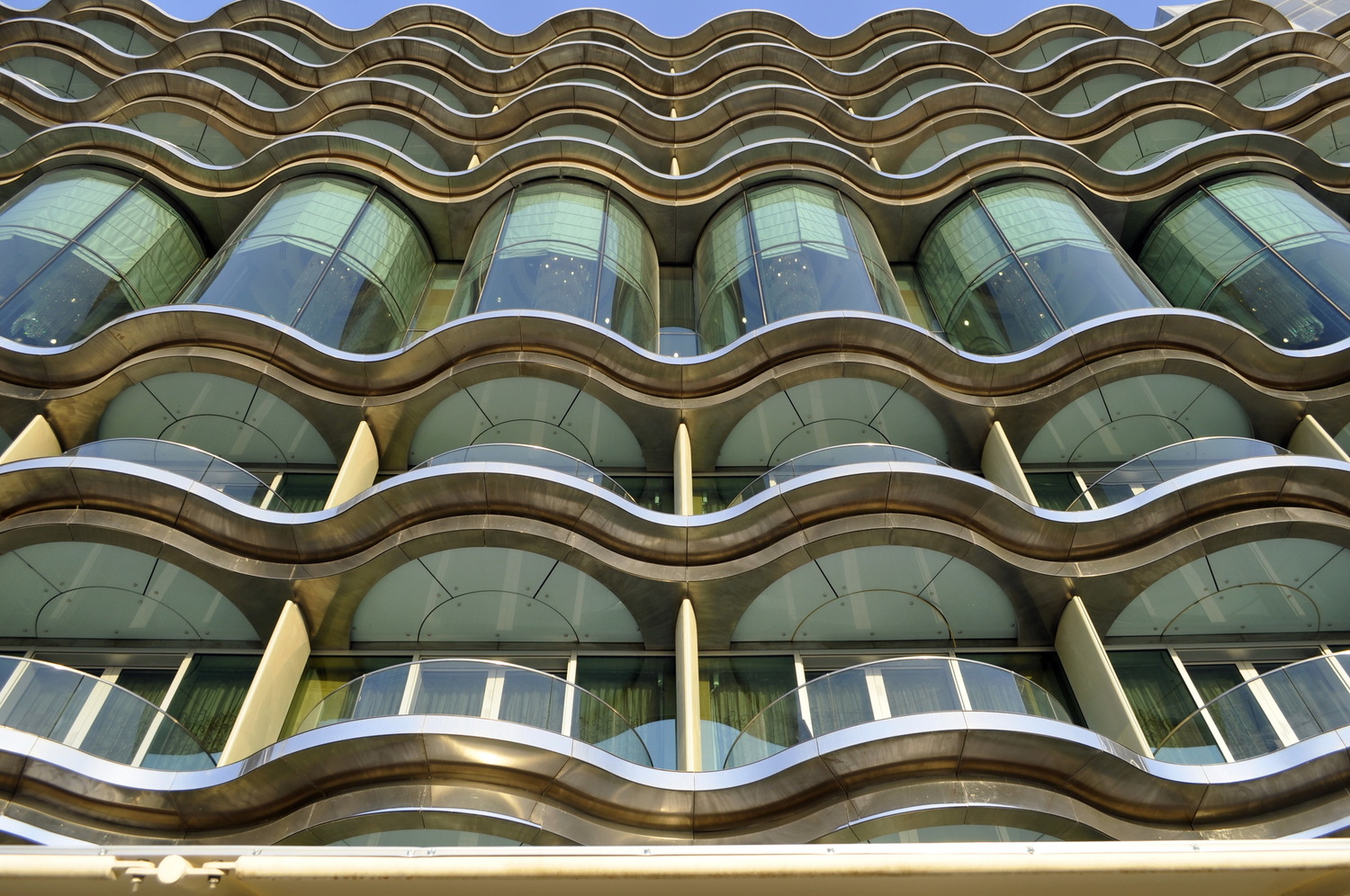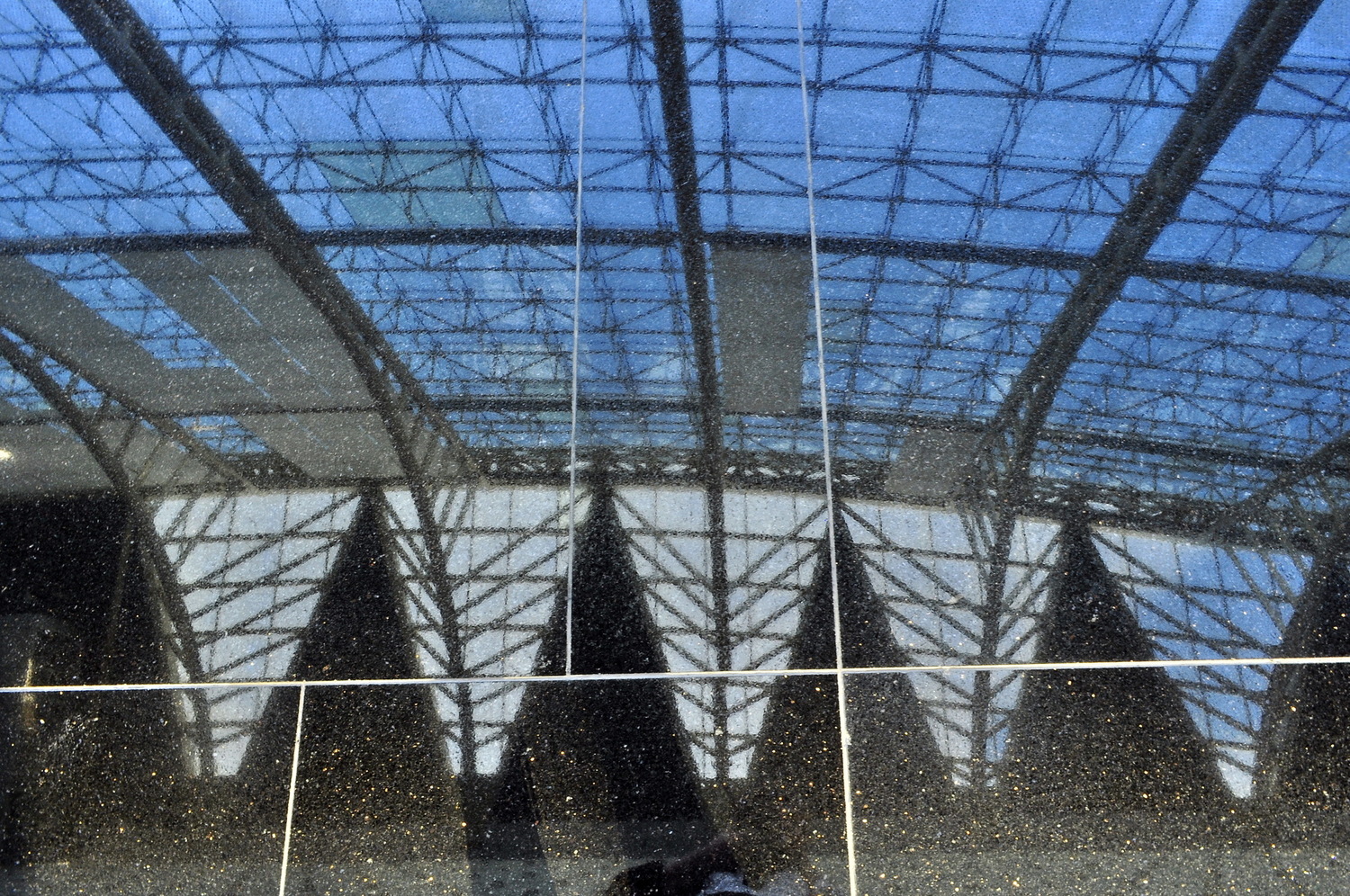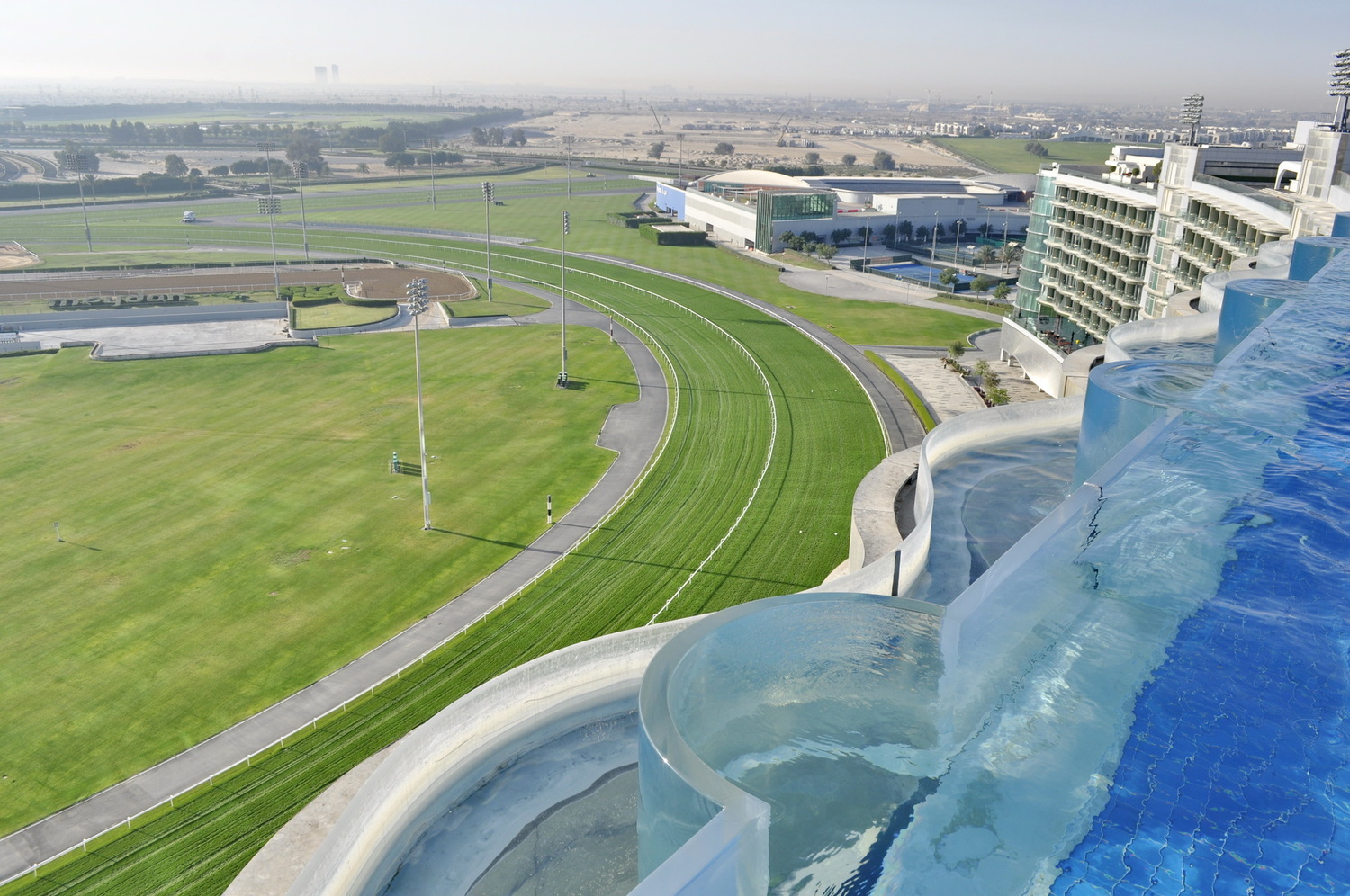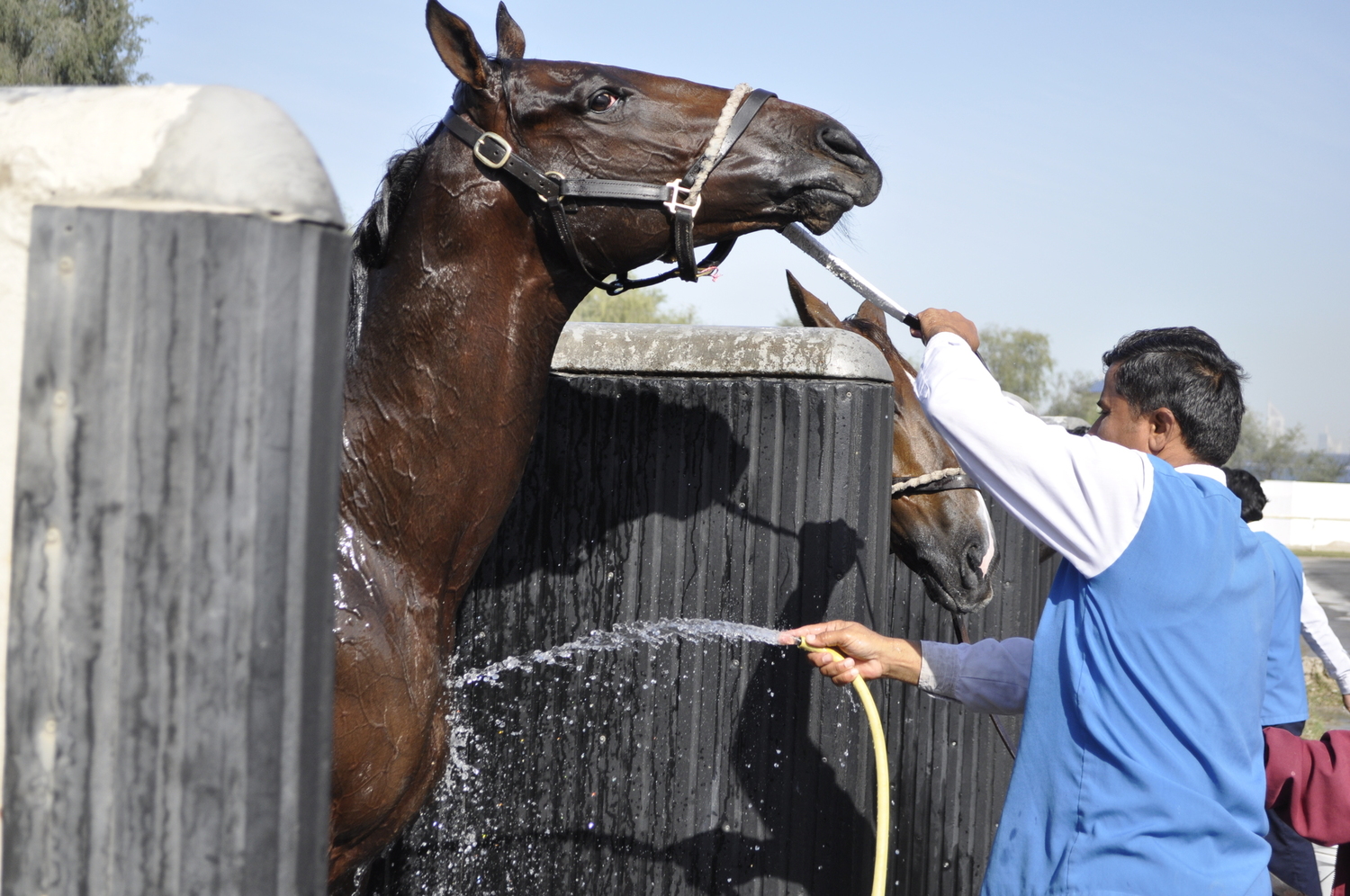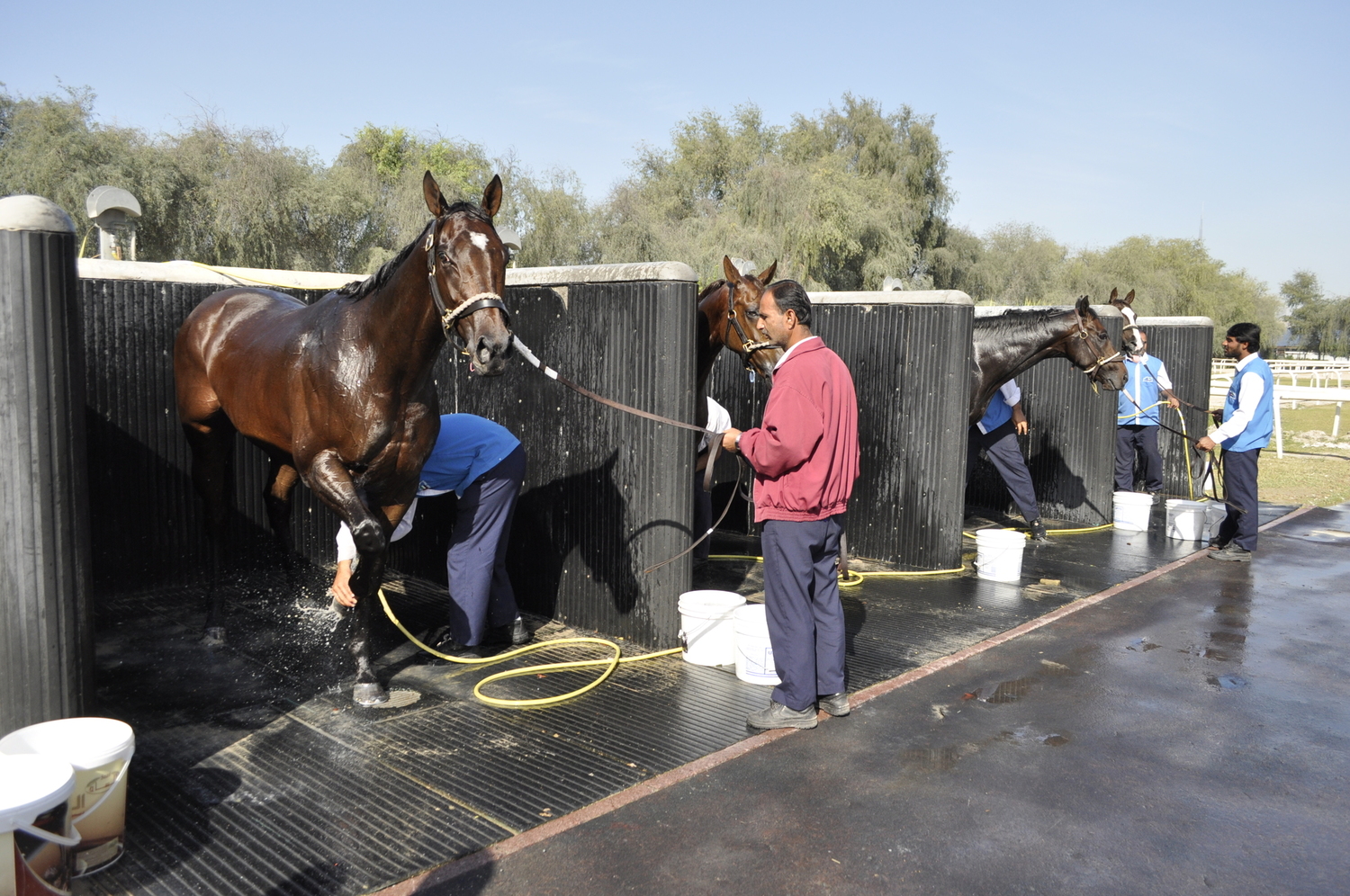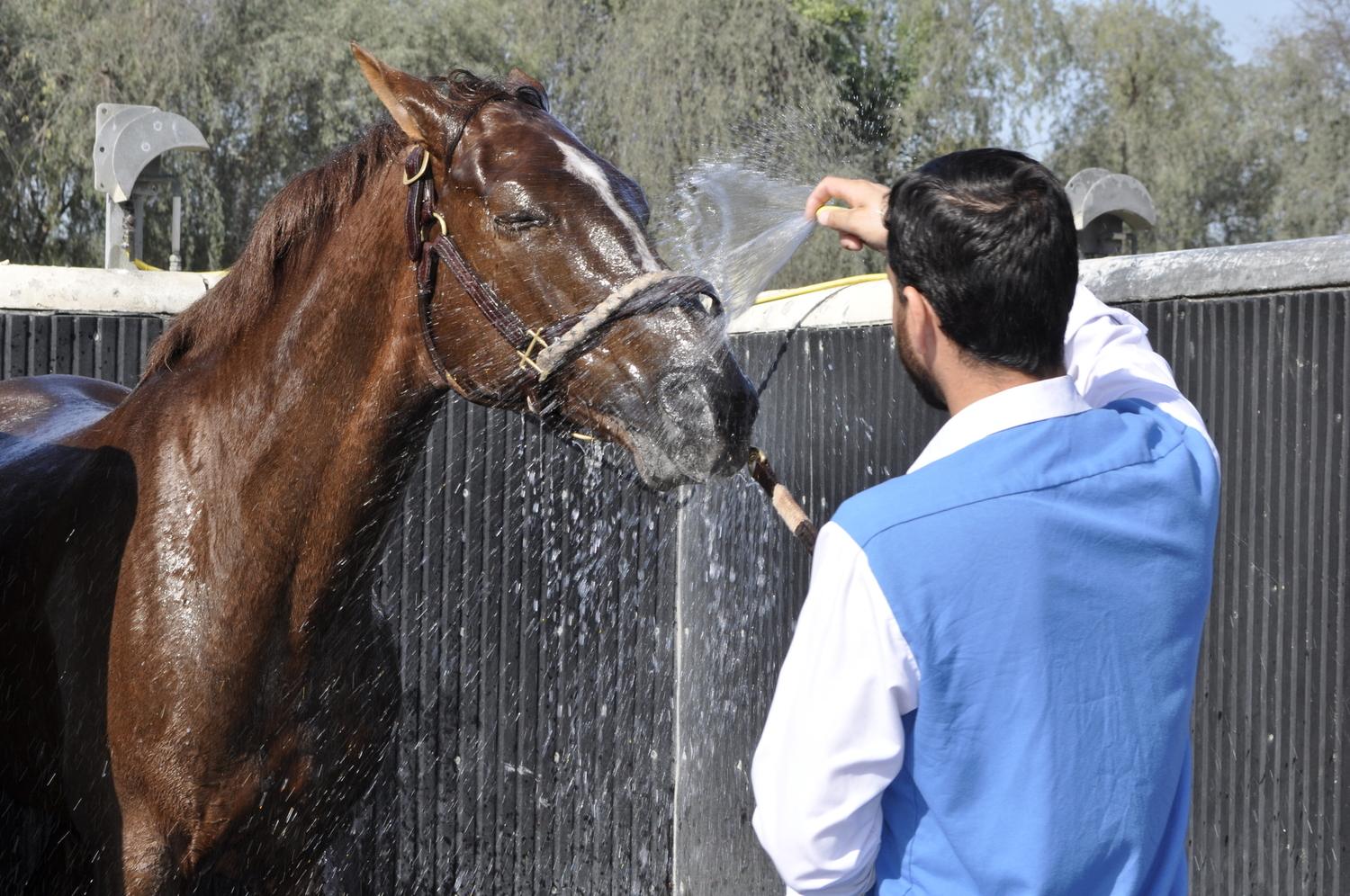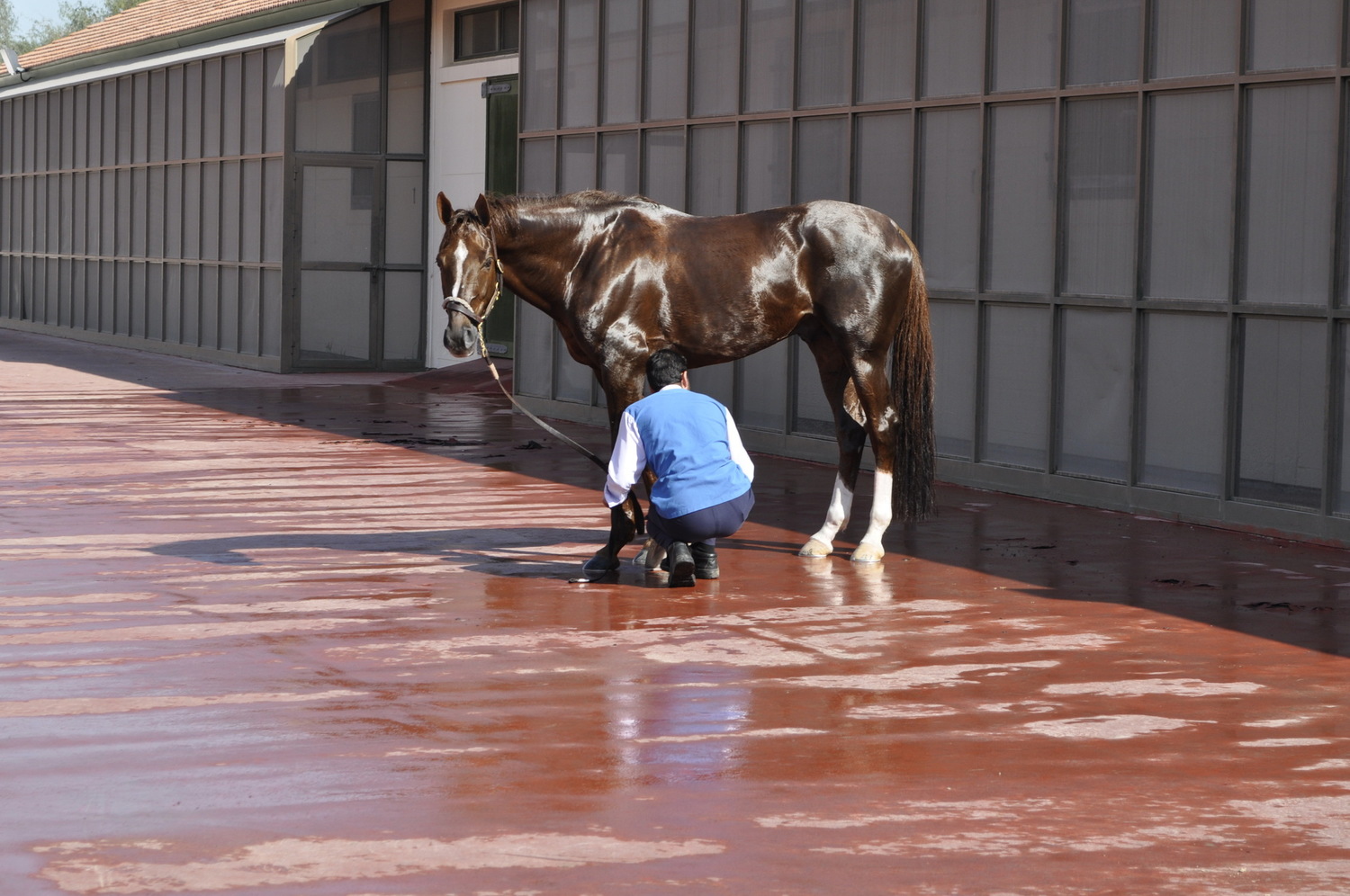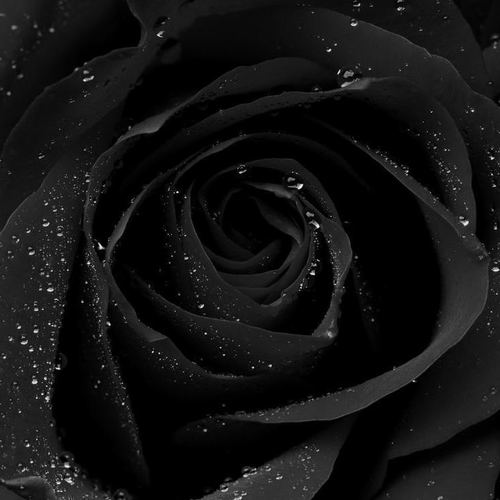Godolphin stables of the Emir.
A breakfast with champions
“A Breakfast with Champions” tour is available twice a week October-the beginning of April in Dubai. This special tour starts early morning at 7:30 am by a breakfast in Meydan hotel followed by stables and Dubai horse achievements exhibition tour. The tour is eventful and interesting indeed. stabletours.meydan.ae/
Nice touch! They were not just pure-bred horses I remembered so much as the whole scale of the horse complex. Solidity and scope are typical for Dubai standards. Please be personally sure of it.
Saddle up, Ladies and Gentlemen! Seats up, to be precise.
The word “Meydan” translated from Arabic means a place where people congregate and compete, a sort of area or square. It is something similar to the ancient Roman Forum.
- © Victoria Lazareva, feelingthelife.com
- © Victoria Lazareva, feelingthelife.com
- © Victoria Lazareva, feelingthelife.com
- © Victoria Lazareva, feelingthelife.com
- © Victoria Lazareva, feelingthelife.com
- © Victoria Lazareva, feelingthelife.com
- © Victoria Lazareva, feelingthelife.com
In the same way that a theatre begins at the cloakroom, the race track begins in the lobby of Meyden hotel, a namesake five-star hotel – the first one in the world built right at the race track. Say what you like, but sheikhs have done their best. The hotel is full of light due to transparent walls and high atrium. Architectural constructions make the space light and airy. Elegant interior design is fleshed out with horse theme.
The forte of the hotel is 285 race track view suite balconies. The roof of the hotel is equipped with an overflow open swimming pool: you can swim to the very edge of the pool race watching. Moreover there are ten superb restaurants the majority of which are viewing. The occupancy of the stands is 60 000 people.
Hospitality, well-wishing and courtesy are the words marking off the hotel staff. From the very beginning you feel as if you were a welcome guest. Actually it is very good when it is fine.
- © Victoria Lazareva, feelingthelife.com
- © Victoria Lazareva, feelingthelife.com
- © Victoria Lazareva, feelingthelife.com
- © Victoria Lazareva, feelingthelife.com
- © Victoria Lazareva, feelingthelife.com
- © Victoria Lazareva, feelingthelife.com
- © Victoria Lazareva, feelingthelife.com
- © Victoria Lazareva, feelingthelife.com
- © Victoria Lazareva, feelingthelife.com
- © Victoria Lazareva, feelingthelife.com
- © Victoria Lazareva, feelingthelife.com
- © Victoria Lazareva, feelingthelife.com
- © Victoria Lazareva, feelingthelife.com
- © Victoria Lazareva, feelingthelife.com
- © Victoria Lazareva, feelingthelife.com
- © Victoria Lazareva, feelingthelife.com
The hotel and the race track are followed by a stables tour. It is the holy of holies of Meydan complex. There are mainly two horse –breeds here: the Thoroughbred and The Arabian.
There are a lot of stables and they all are tagged for Roman alphabet letters. Each stable houses 60-100 thoroughbred colts and fillies, mares, stallions and geldings with champion potential. The latters are kept in clean and conditioned mini-stables in 20 roomy loose boxes.
Grandstand Stables shown to tourists includes a lot of housekeeping area such as a shoeing forge, horse feed and hay hangars, horse baths and showers, athletic tracks and so called “kitchens” where horse breakfasts and dinners are sorted out in pails.
Everywhere scrupulous neatness impresses. And above all, there are not any specific odors. Stables surroundings are well-managed: lawns are made, broadleaved trees are planted. The long and the short of it – a countryside paradise. And there used to be a desert.
Finding yourself in the stables with the horses you want to hag all of them and at the same time. Starting stroking one of them, another one is looking at you jealously. You are coming up to the one with sad eyes, start talking to her – and answering it is moving its face towards you. You are touching its suede whiskered nostrils feeling hot horse breathing on your skin. Here it is – unsophisticated happiness!
- © Victoria Lazareva, feelingthelife.com
- © Victoria Lazareva, feelingthelife.com
- © Victoria Lazareva, feelingthelife.com
- © Victoria Lazareva, feelingthelife.com
- © Victoria Lazareva, feelingthelife.com
- © Victoria Lazareva, feelingthelife.com
- © Victoria Lazareva, feelingthelife.com
- © Victoria Lazareva, feelingthelife.com
- © Victoria Lazareva, feelingthelife.com
- © Victoria Lazareva, feelingthelife.com
- © Victoria Lazareva, feelingthelife.com
- © Victoria Lazareva, feelingthelife.com
- © Victoria Lazareva, feelingthelife.com
- © Victoria Lazareva, feelingthelife.com
- © Victoria Lazareva, feelingthelife.com
- © Victoria Lazareva, feelingthelife.com
- © Victoria Lazareva, feelingthelife.com
The Thoroughbreds. Some back ground
At the end of the 17th century Ottoman Empire rulers started gift the Arabians to European monarchs as a special gesture. Also Arabian and Turkic horse-breeds were brought to Europe as trophies in war. The stallions imported to England: Byerly Turk in 1684, Darley Arabian in 1703 and Godolphin Arabian in 1724 had become the basis for new pure breed development. 93% of Thoroughbreds’ breeding backgrounds originate from one of these three stallions.
New pure breed and horse-racing development were going simultaneously. One determined another. Horse breeders focused on horse speed abilities: Thoroughbreds are very fast, high-strung, jerky and stayer. Modern Thoroughbreds are able to put on average sprint and middle-distance speed up to 60 km/h (up to 2800 meters) and 55 km/h at long-distance (more than 3000 meters).



Upon pedigree breeding one of the stallions had been discovered a one-of-a-kind anatomical anomaly. The size of Eclipse’s heart, a Thoroughbred stallion, weighted 6.35 kilos that is 40% more than a normal horse heart size.
This big heart allowed pumping blood more intensively upon running that advantaged him over his competitors. Similar physiological anomaly had been inherited by all Eclipse’s offsprings and become breed peculiarity on the whole.
Many of us have known these amazing horses since their childhood reading Alexandre Dumas’s evergreen novel called “The Three Musketeers”. Duke of Buckingham’s horses were the Thoroughbreds ('The horses went like the wind'). Later this great four in hand was gifted to Athos, Porthos, Aramis and D'Artagnan.
Due to awesome endurance and speed characteristics the Thoroughbred is very popular in the world. And of a great worth. The cost of would-be colts can be estimated at dozens of thousands of dollars, the best stud horses service right – at hundreds of thousands of dollars. The best representatives of the breed are estimated at millions of dollars.


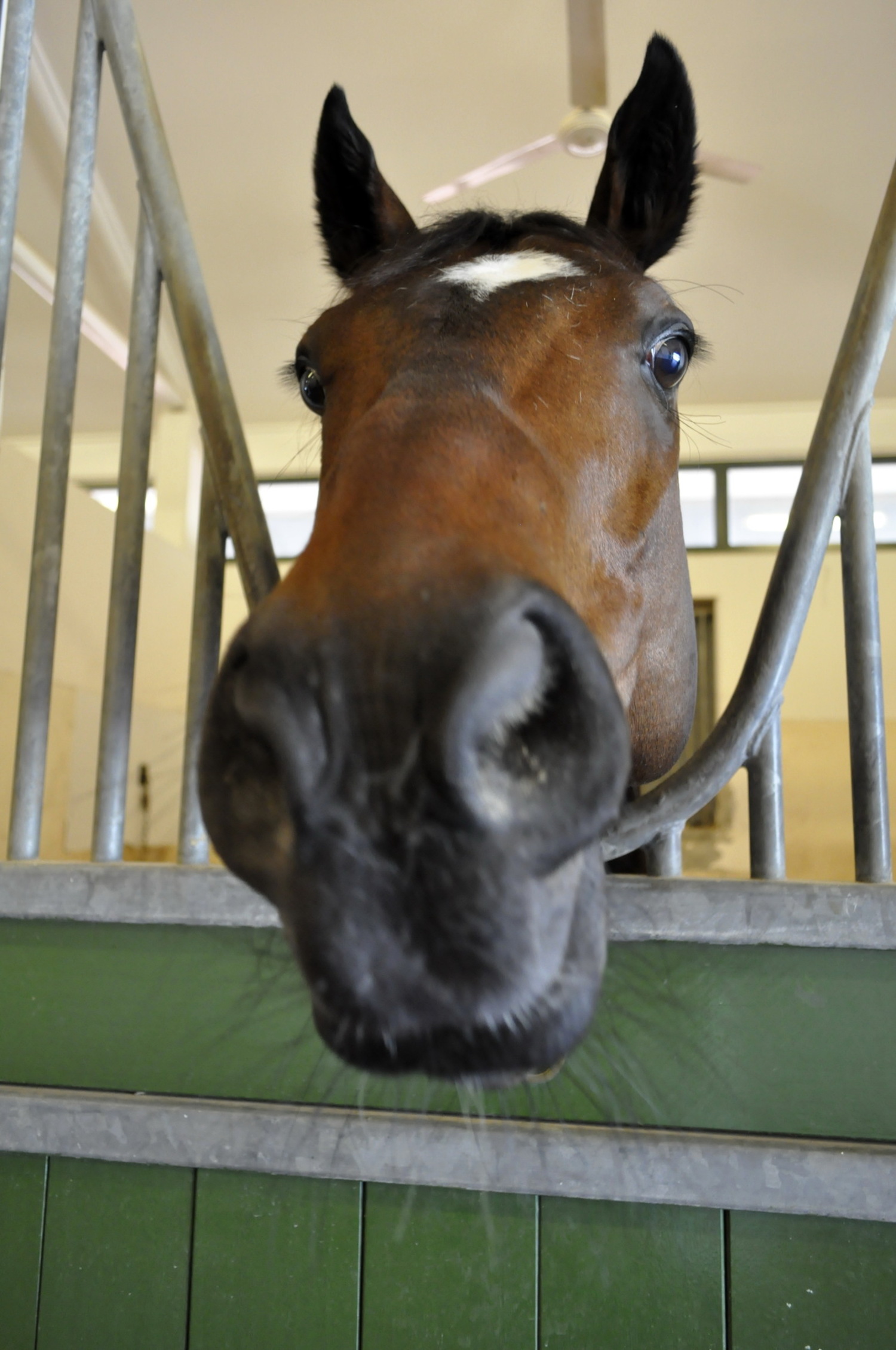
The most expensive horse in the world is a Thoroughbred stud horse called Shareef Dancer. In 1983 this three-year-old stud horse showing great promise was bought for 40 millions of dollars by Sheikh Mohammed bin Rashid Al Maktoum, the current constitutional monarch of Dubai.
Being in loose boxes the Thoroughbreds seem awkward, angular with excessively long faces and high thin legs. But as soon as they are in the open air everything changes. Silhouette graphics, sophistication, point – these are things which are particularly noticeable. Mountainous, strong and muscular. Gorgeous!
To keep fit these horses are trained constantly including a special horse pool. Trainings start early morning while the air is fresh and are held once in three days. Trainings are very individual. In case of a horse promising, it is trained more often. After trainings would-be or current world-class champions have a rest.
I was lucky to picture a bathing day in a particular stable. Stable staff told us: horses are water washed daily; shower gel and shampoo are used once in three days. After the shower instead of going to their loose boxes horses are allowed to get dried in the sun to avoid skin problems.
- © Victoria Lazareva, feelingthelife.com
- © Victoria Lazareva, feelingthelife.com
- © Victoria Lazareva, feelingthelife.com
- © Victoria Lazareva, feelingthelife.com
- © Victoria Lazareva, feelingthelife.com
- © Victoria Lazareva, feelingthelife.com
- © Victoria Lazareva, feelingthelife.com
- © Victoria Lazareva, feelingthelife.com
- © Victoria Lazareva, feelingthelife.com
- © Victoria Lazareva, feelingthelife.com
- © Victoria Lazareva, feelingthelife.com
- © Victoria Lazareva, feelingthelife.com
- © Victoria Lazareva, feelingthelife.com
- © Victoria Lazareva, feelingthelife.com
- © Victoria Lazareva, feelingthelife.com
- © Victoria Lazareva, feelingthelife.com
- © Victoria Lazareva, feelingthelife.com
- © Victoria Lazareva, feelingthelife.com
Godolphin Racing is the Maktoum family's private thoroughbred horseracing stable and was named in honour of the Godolphin Arabian, who came from the desert to become one of the three founding stallions of the modern thoroughbred.
Godolphin's headquarters are in Dubai, United Arab Emirates. It operates two racing stables in Newmarket, Suffolk, United Kingdom, two in Sydney, Australia, one in Melbourne, Australia, and also has horses in training with independent trainers in Great Britain, Australia, France, The United States of America and Ireland.
That’s interesting: Emir’s horses spend comfortable and nice winter in Dubai but summer in Great Britain.
Godolphin Racing — Wikipedia, the free encyclopedia
Thoroughbreds’ keeping requires an enhanced care. Only the best trainers and the fairest riders work with these horses. Constant vet inspection. Balanced feeding (selected premium horse feed including different supplementary feeds). Each horse has its own “hollow-ware” and menu for avoiding different disease.
Thoroughbreds’ muliebrity is expected. These horses had been belonging to royal families and English upperclass for centuries and had been keeping in well-equipped stables. Even at that time these horses were treated in a special way. No “flocking”! Stake on every horse’s “stardom”.
- © Victoria Lazareva, feelingthelife.com
- © Victoria Lazareva, feelingthelife.com
- © Victoria Lazareva, feelingthelife.com
- © Victoria Lazareva, feelingthelife.com
- © Victoria Lazareva, feelingthelife.com
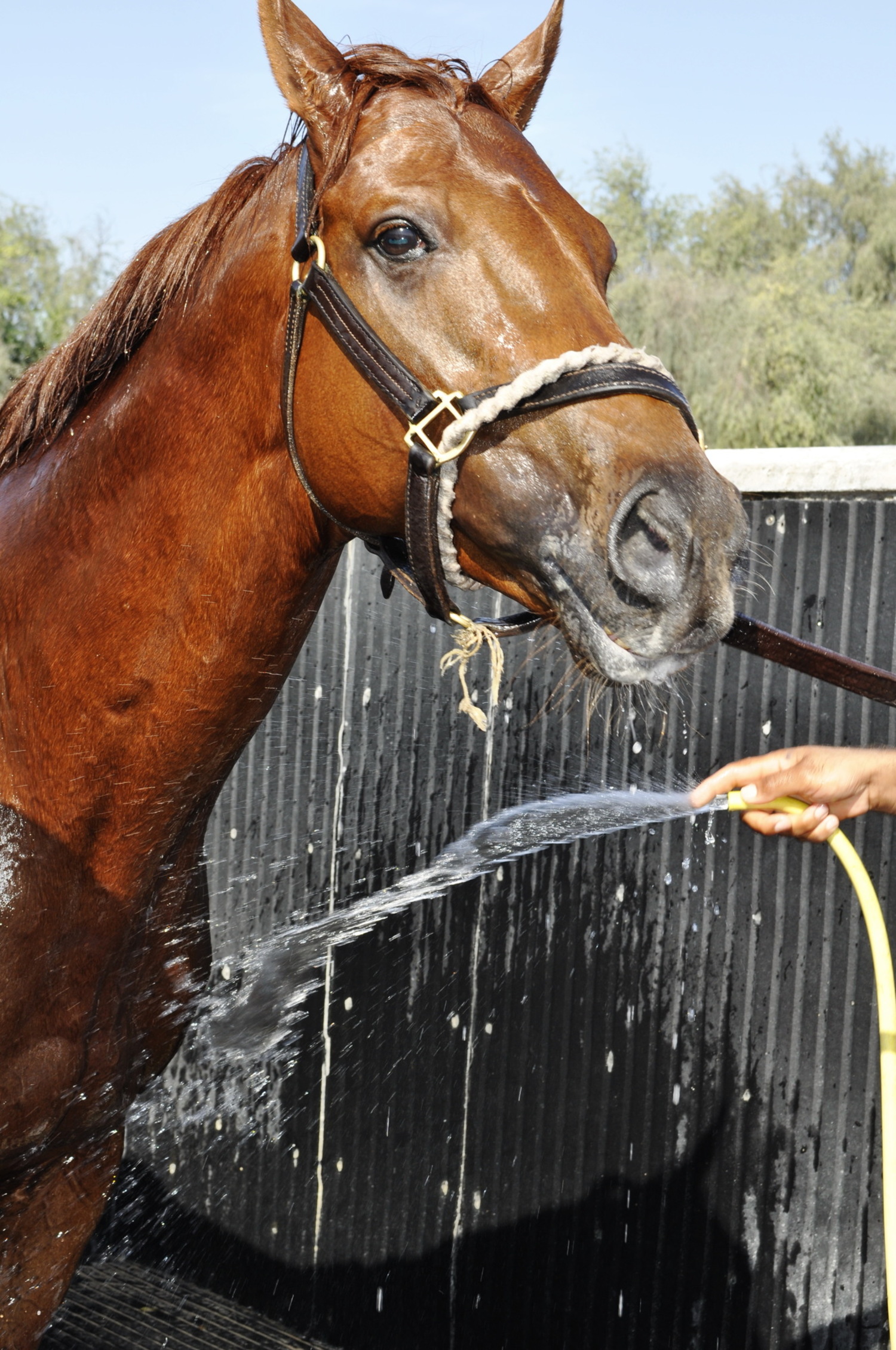

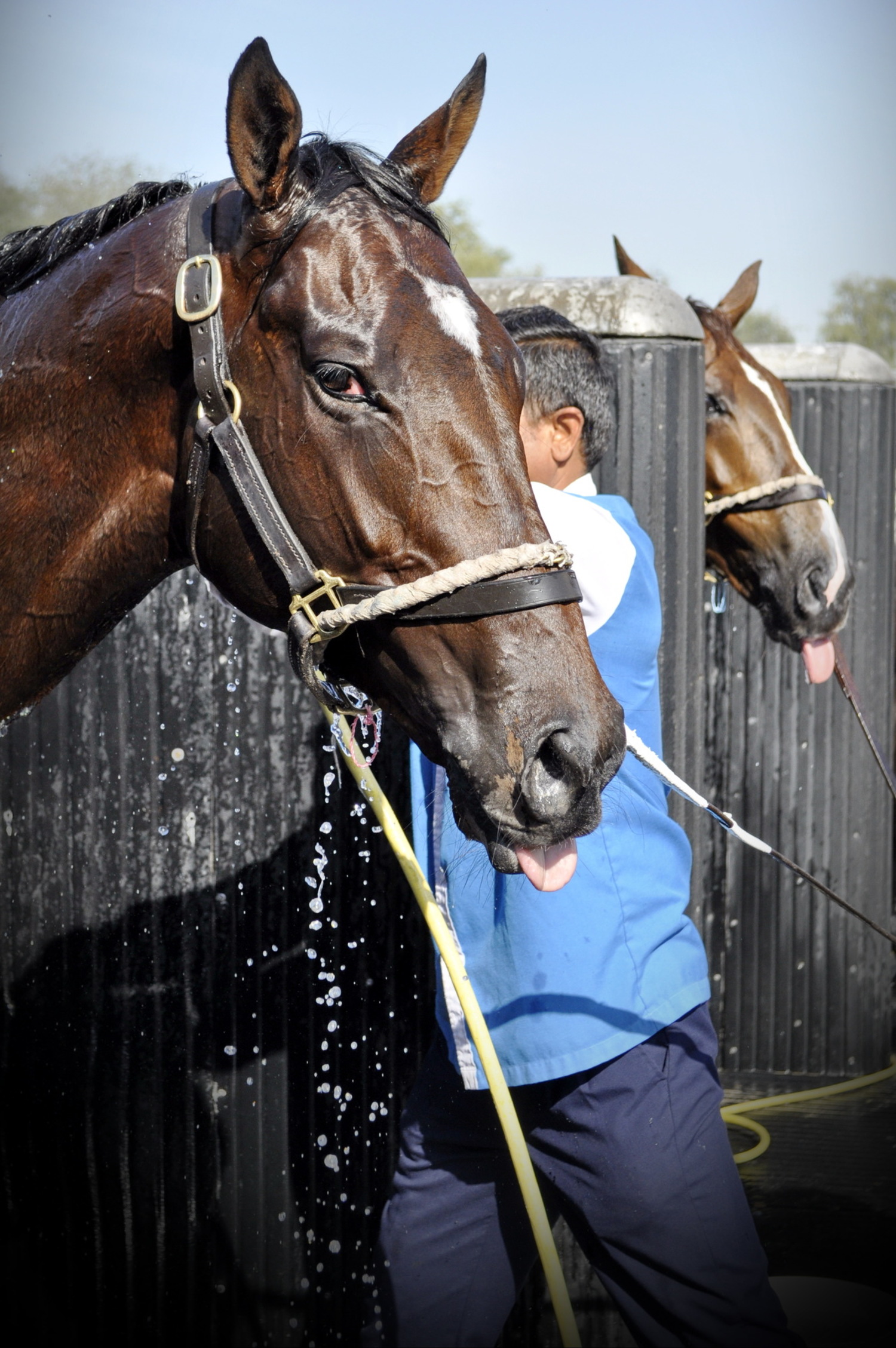
It is time to come back to the hotel after visiting the stables. The strongest and the most inquisitive ones are expected to have a small but interesting exhibition devoted to the Al Maktoum’s success story. Also you can familiarize yourself with racing landmarks in the United Arab Emirates.
P.S. Apart from the Thoroughbreds, pure Arab horses are kept and raised in the Emir's stables. Glorious pure Arab horses are worth being dedicated a separate story either. So, to be continued!

Our love for horses and horse riding is second nature, and this comes from our Arab roots.
His Highness Sheikh Mohammed bin Rashid Al Maktoum, Ruler of Dubai, UAE Vice President and Prime Minister
 © Victoria Lazareva, feelingthelife.com
© Victoria Lazareva, feelingthelife.comGood luck!


